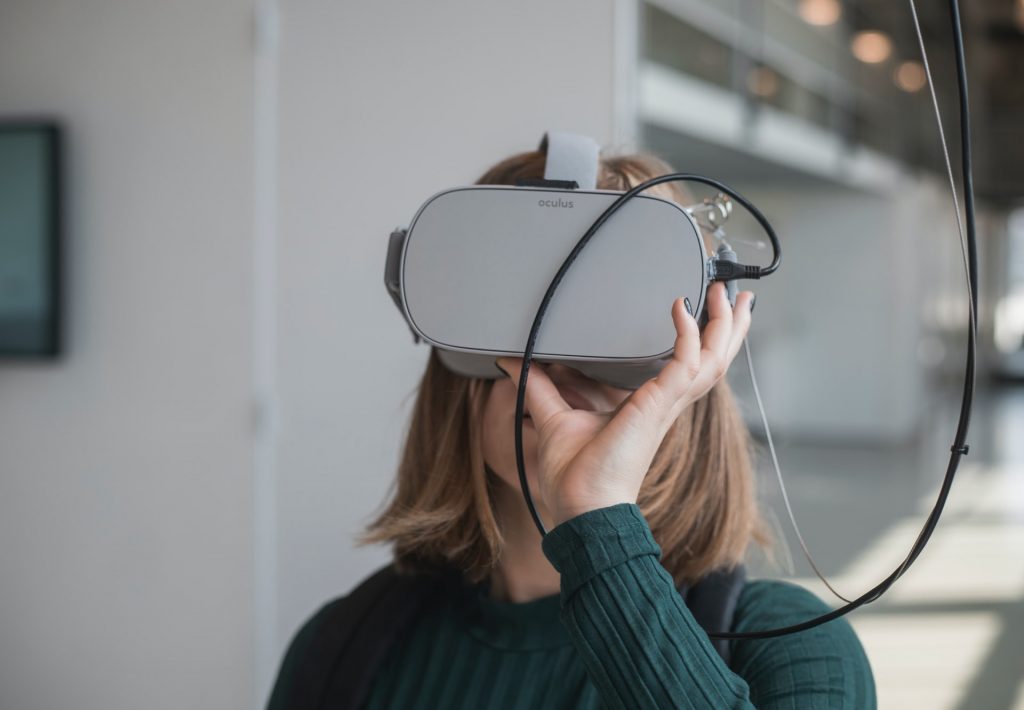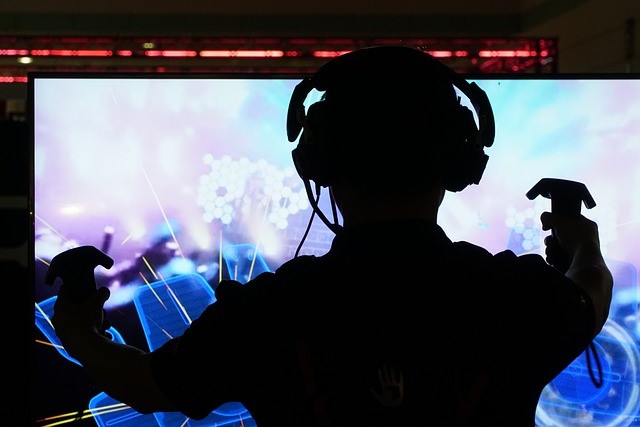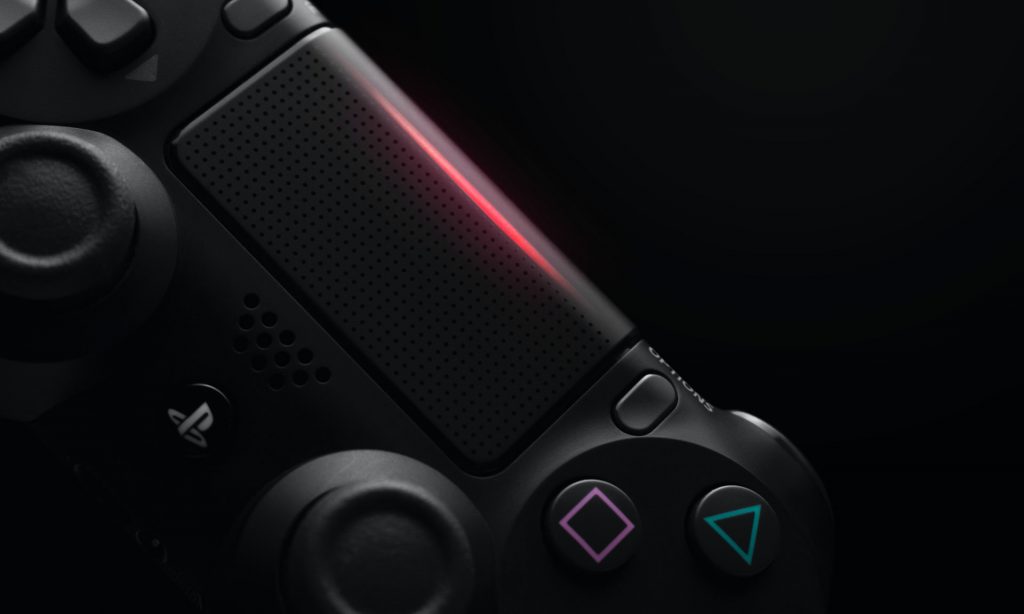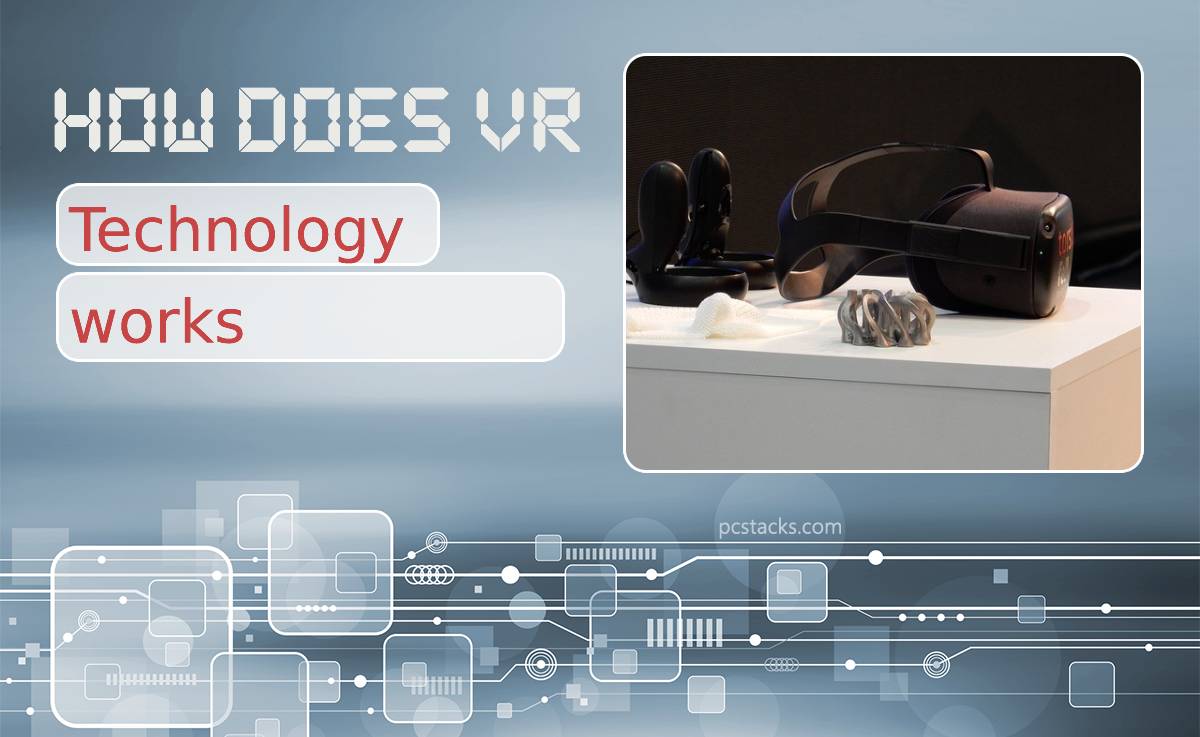Table of Contents
How Does VR Technology Work?
You’ve more likely than not heard the term VR technology, or AR/VR headsets, floating about and might even have some sort of idea as to what it is. Technology is changing and with VR technology becoming more prominent in the tech industry, you might be curious as to what it actually is, and how it works.
Although there are plenty of sci-fi films and TV shows that tell us exactly how technology is bad and how it all goes horribly wrong in the future (Black Mirror, we’re looking at you…), VR isn’t all horror! Or rather, it doesn’t have to be if you don’t want it to! To find out exactly what we mean by that, keep reading below to find out exactly what VR technology is and how it works!
What Is VR?

The abbreviation ‘VR’ is more popularly used, but it actually stands for virtual reality, and it’s exactly that! It is a sort of technology that artificially stimulates a 3D environment that looks realistic.
Users are able to interact with the interface as well as control their movements, and one of the most common ways that VR can be enjoyed is through the use of VR headsets, which essentially are devices that help to transport and immerse you into a virtual form of reality, which you’re then able to interact with through controllers.
The technology behind VR that makes the sensation of flying around a city feel so realistic, even though you’re just standing in your living room, comes from applying the rules that apply to perception. The headsets are machines that mimic the way we interact with our real surroundings, and do exactly the same, just through software!
In more technical terms, things like frame rates, gyroscopic sensors, and head tracking technology are just a few of the components that go into VR headsets and help make the experience all the more life-like.
Elements of VR Technology

There are some core elements that go into VR technology that help create such an immersive experience, and we can only see these expanding and improving as the technology and software does!
1. Spatial Audio
As much as VR is about what you can see visually, a lot of what makes it feel so real also comes from the audio side of things. The best VR headsets are usually the ones that have focused on spatial audio and have made sure that you have a 360-degree sound to make it feel like you’re in a certain environment.
Depending on where you hear a specific noise coming from, you’re more likely to follow that sound and turn in that direction, letting spatial audio not only create a realistic environment, but it can also act as a tool to help you guide and navigate your way through.
2. Head Tracking Technology
Tying in nicely with spatial audio, another key component of VR technology is head tracking software. Newer VR headsets have even started to feature eye-tracking technology to aid your immersive experience even further, but as expected, head tracking can help you look around your environment, and depending on the direction you are turning your head, you’ll discover something new to look at.
Head tracking technology is also used for safety, and sensors around the VR headset can often help you to keep safe in the space that you’re standing in and will make sure you don’t bump into any objects or walls that you might have wandered too close to.
3. Field of View
Our field of view is the primary visual component that VR headsets mimic in order to create a realistic environment. Although humans have a field of view of 220 degrees, in comparison, VR headsets can do about 180 degrees, for now.
But despite the reduced FOV, it’s still quite close, and considering that it is developed through software, it’s pretty impressive. As VR technology constantly evolves, the FOV might become even more comparable in the near future!
VR Headsets on the Market
Now that we know a bit more about VR technology, headsets, and how they work, you might be keen on getting your hands on one of your own. Here are some of the top ones on the market, or ones that are soon to be released!
Playstation VR 2

Although this hasn’t officially been released, it has been announced, which means that the release date isn’t too far away either! Upgrading everything that its predecessor had, the PSVR2 features 2000 x 2040 pixels per eye, headset feedback, as well as eye-tracking technology to create one of the most immersive gaming experiences yet.
The haptic feedback from its new Sense controller helps to compliment the headset, so you really will feel like you’re in the game world!
Oculus Quest 2
This is a headset that is already on the market and is one of the most popular options out there, and for a good reason! Developed by Facebook Technologies, the Oculus Quest 2 has different storage options for you to choose from.
Plus, there are amazing safety features such as being able to trace a virtual boundary around you, so that you’re alerted any time you step too close to it and can reposition yourself. It also features the newest Qualcomm Snapdragon XR2 processor, meaning that your gameplay experience will run as smooth as butter!




